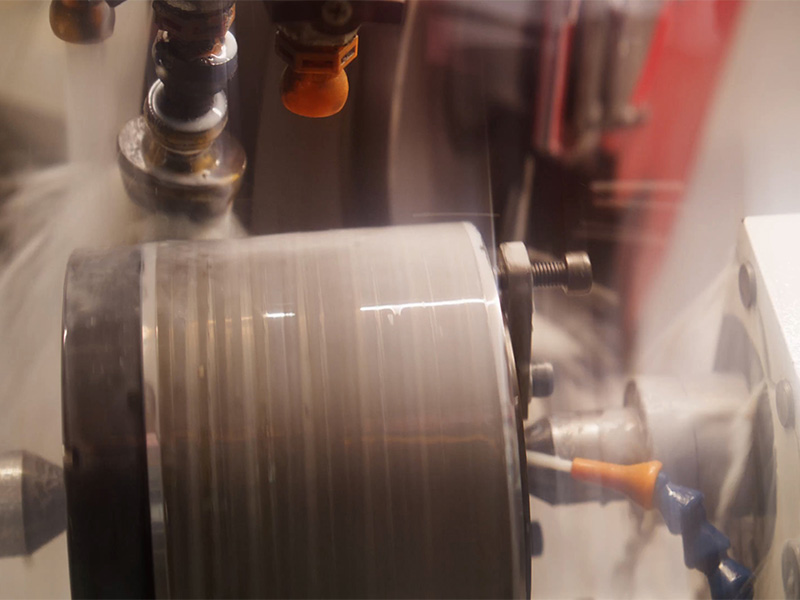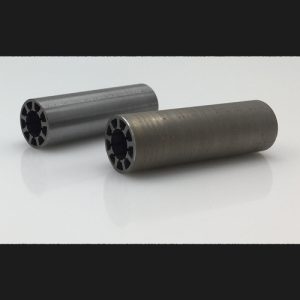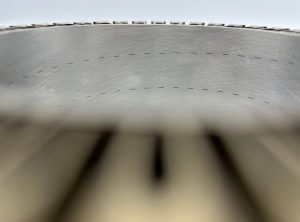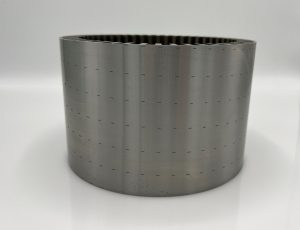Mechanical processing: For functional integration and new solutions
Mechanical processing of lamination stacks is a little-known process. The reason for this is that mechanical processing is difficult with processes common today such as punch-stacking and welding. Bonded stacks have the advantage of very high stiffness and density. No chips are pressed between the laminations and machining can easily be carried out. Aftertreatment can even eliminate short circuits.

Mechanical processing of bonded stacks can be carried out
The advantage of bonded lamination stacks: Due to their stiffness, they can be machined mechanically. Today, we have series production processes in which precise lamination stacks are honed internally or externally ground. Holes can also be drilled for sensors and the like.
Chemical and mechanical processing for axial flux motors
We are already successfully machining bonded wound axial flux motors by milling and drilling, including downstream chemical processing to eliminate short circuits between the laminations.
Advanced possibilities for motor construction
Prepare for the functional integration of bonded stacks to be many times higher than is familiar today – this opens up completely new possibilities when designing your motors. In the future, as many lamination stacks will be reworked as components are today.
This is what our employees have to say:
“Bonded stacks can be processed mechanically – we do drilling, thread forming, grinding, and honing in series production.”

Pascal Huber
EngineeringImpressions
Our specialist will be happy to answer any questions you may have.
Fact box
- Functional integration by means of mechanical processing opens up new horizons
- Grinding, honing, milling, drilling – everything is possible
- Chemical processing to eliminate short circuits



